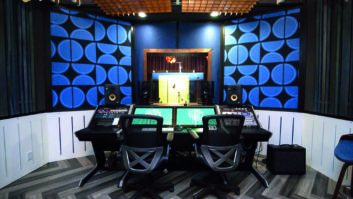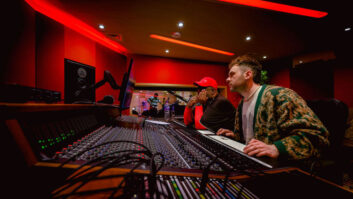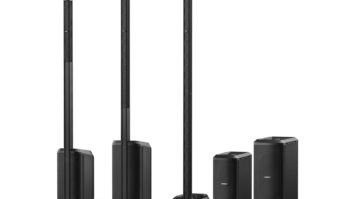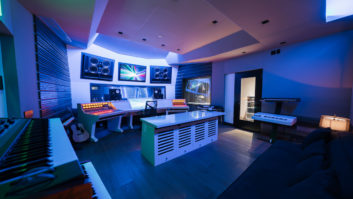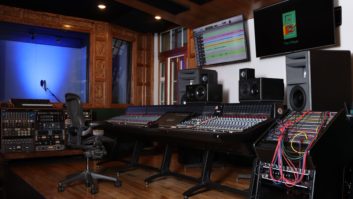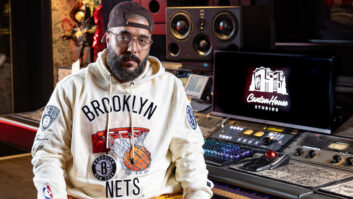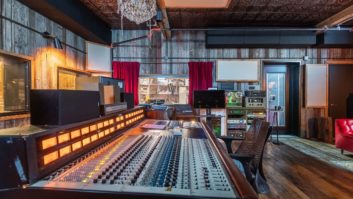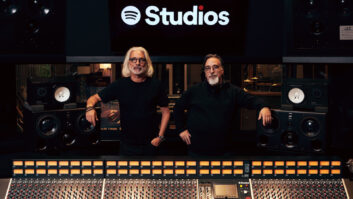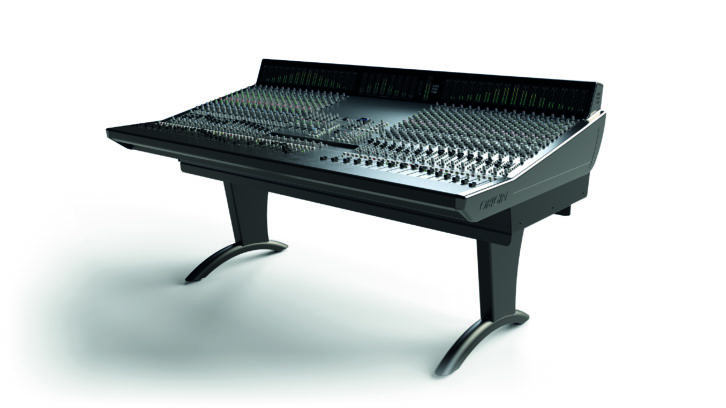
It is that time of year again when Mix looks into equipping or upgrading your studio setup.
As I write this, we’d all be getting ready to travel to the NAMM show, where we can hang out, see what new goodies the manufacturers have lined up for us and learn about the progress in any industry developments. Sadly, the current, global situation won’t allow us to do that, and we’re all “living” in a virtual world, but I guess one side benefit is that it has made us all re-evaluate our setups and workflows.
Thankfully, technology has made it possible for many of us to remain busy and work remotely, so let’s have a look and see what we can specify to upgrade our studios and make them more flexible and attractive to remote clients.
We’ve done a few of these over the years, and that’s why I will approach this edition more like an upgrade, rather than start from scratch; I’ll assume there are a few things in place like the DAW and computer setup, headphone foldback systems, mic stands, cabling, etc. But I’m still going to spend my $100K.
START AT THE CENTER
I’ll kick things off with the centerpiece of every analog studio, and that’s the console. It really boils down to how many channels you want to be able to record at once, but we are also taking mixing into consideration.
A lot of work happens inside the box these days. However, this is our analog studio and I am still a massive fan of having things come back on faders, sounds hitting well-designed electronics, and the ability to do several things at once, which is the strength of an analog board.
The Solid State Logic Origin 32 will provide you with a full 32-channel analog in-line console, with its classic SSL sound, the famous E-Series EQ, that punchy SSL mix bus compressor and 16 into 2 buses! Direct outs for each channel, two stereo and four mono auxes, four stereo returns and SSL’s PureDrive technology makes this a very powerful desk indeed.
With the console in place, we can have a listen to some stuff, before we get all giddy about all that fancy outboard we’re going to hook up.
As with nearly everything about our industry, monitoring is an extremely subjective issue. Engineers can talk for days about which monitors they love and hate. Since my start in engineering, I have been a huge lover of the Genelec 1031A MkI, and it took me a very long time to find something that sounded as good and complemented them in my workflow as a second set of near fields.
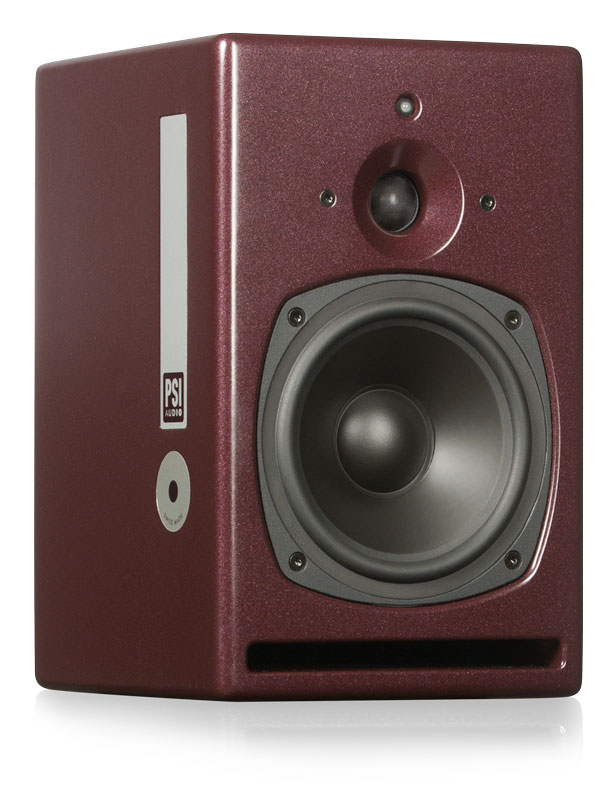
That was until I was introduced to PSI Audio. Suddenly a whole new world of clarity, low end and imaging opened up. And as a bonus, they translate so well to everywhere else. It made switching between them and my ancient Genelecs make a lot more sense and fun.
For our setup here, I’m going to go a little bigger than my A17Ms and install a pair of A25M three-ways. PSI takes analog very seriously, and these babies are hand-built in Switzerland to the highest standard. They look good, and in my opinion, they sound superb. The cool thing with PSI as well is that their monitors translate well across the range, so work you do on the big ones translates down to the small ones, too, which will allow us to play around with some surround setups a little later on. [See sidebar.]
SPICING UP WITH OUTBOARD GEAR
One of the joys of analog is that the sound palette is so versatile. Each unit will give you a different sonic character, and the ability to push these boxes to their extremes allows an engineer to create sounds out of the box that the digital realm isn’t able to provide yet.
That’s why us analog heads like having such a plethora of different machines at hand.
So I’m going to add a couple of things to our outboard list, some of which can do double-duty for final mix/mastering processing.
First up is Crane Song’s HEDD Quantum. The new crystal in the HEDD just makes for amazing clocking to anything digital you’ll be running, and it has the added benefit of Dave Hill’s Triode/Pentode/Tape processing technology.
EQ-wise, the Regular John Recording Bax EQ will give you that classic Pultec vibe, will work perfectly as a mix bus EQ, and my favorite thing about it is the 40k HF band for putting some extra air in your mixes.
I know we have the SSL bus compressor on the console, but it’s always good to have some options in sound and dynamic behavior when it comes to dynamics. The Chiswick Reach 20th Anniversary Edition will deliver that. It is so warm-sounding, and it’s one of those compressors that you can push without it starting to sound claustrophobic.
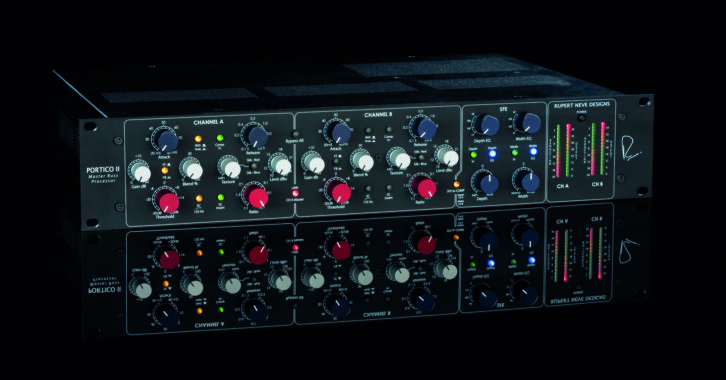
To complement these units I’m adding Rupert Neve Designs’ Master Buss Processor. The RND MBP will give you the flexibility to process instrument groups, individual instruments and, of course, the entire mix buss with classic Rupert compression, limiting, harmonic content, parallel processing, EQ and stereo imaging.
And as you can never have enough tools to do the job, Jonathan Little’s new Little Labs LL2A is joining the dynamics family here. It’s another one of those dynamic processors that doesn’t just control the dynamics but can musically shape it.
CHARACTER OUT FRONT
To add more preamps to a console that already has 32 might seem mad; however, I keep coming back to the different character that different electronic designs can offer you. Something may sound thin or lacking in punch with one preamp, but comes alive once you run it through a different circuit. Hence, the need for a couple of preamp options.
I’ve always loved Manley’s boxes, but until recently I had never had the pleasure of using the VOXBOX. I was in a studio in Romania that was completely digital and I had to track some folklore vocals. Everything sounded pretty thin and “cold,” so I went looking for something analog and found the VOX BOX gathering dust. Once the vocals went through it, they just came to life.
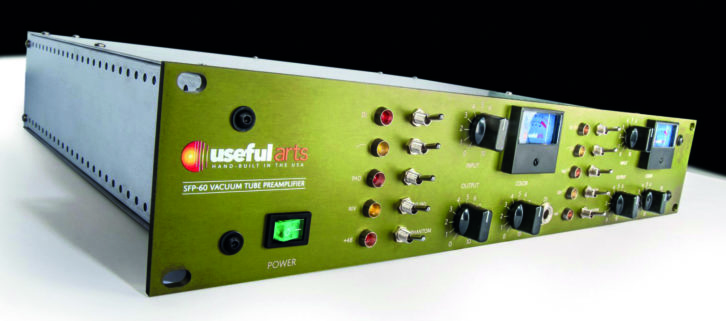
Useful Arts Audio’s SFP-60 has to be on our list, as well. It has the ability to make things pop out of the mix. Personally I have been using it a lot on snare mics and wow, it packs a punch!
As we’re talking about Useful Arts Audio, I’m going to sneak in the BF-1 DI, which is the most versatile tool for recording DI bass and acoustic guitars. And I think we’ve all come across recording situations when sometimes material is still being written or perhaps the singer is having a shy moment and is suffering from Red Light Syndrome, so if we can set them up with a mic, a pre and an interface, in a separate room somewhere where they can work in peace, the Useful Arts Audio Hornet will handle all that.
For the readers who know me, I can’t not include some API. They just define the American sound for me. The Channel Strip will give us an extra flavor of pre, comp and EQ with that classic API headroom and punch.
YOU ALWAYS NEED MICS
Moving on to some microphones. I’m making the assumption here that we’re already pretty well stocked up on some of the regulars. But as one of my mentors used to say: ”The audio industry must have been invented by bank managers. There’s always something more you need to buy!” Of course, we can always have more microphones.
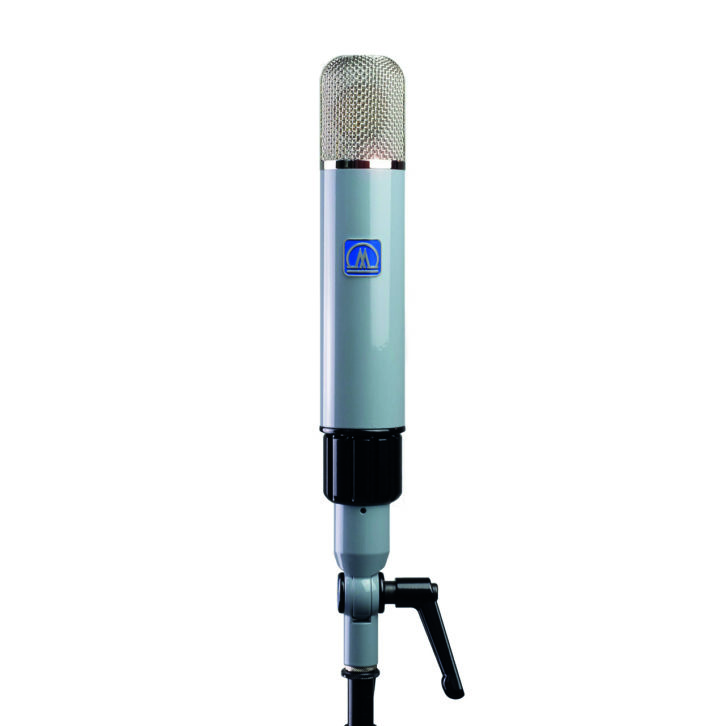
I’m going to put the Myburgh M1 on our mic list for its linear frequency response and lush openness. In addition to loving everything tube, I adore ribbon mics, and a pair of Rupert Neve–designed sE Electronics RNR1s will complement our closet nicely. We may already have a Royer R-121 and a bunch of 57s but ever since Royer developed that special clip so both can work nicely together and in phase (!), I’m specifying that combo. They are so useful, more than one will not hurt.
AND FINALLY…
I always like to throw in a little curve ball. I like using things in the studio that are not necessarily designed for studio use. If you haven’t checked out David Rainger’s guitar pedals, do! His pedal designs are out of this world, and they have allowed me to shape sounds and make them interesting in a way you may not always think of in the recording/mix environment. So the Rainger FX Mini Bar – Liquid Analyser is going in! The sound this pedal makes depends entirely on the type of liquid you put in it. Come on, we all need one.
I seem to remember it was Mixerman who used the term “Wombification” in his book and I agree wholeheartedly with him. Making sure your work and recording environment is cozy, creative and comfortable is so important. With all our gear listed above we’re pretty on the money with our budget, leaving us a little bit to spend on wombification.
I’m sure most of us have seen them advertised on social media. I really like the look of it and I like the fact it doesn’t take up much space. Hopefully the Kona Floorlamp will put us in the mood for making great music and momentarily escaping the madness in our world.
Be safe out there and hopefully we get to hang out soon.
Option 1: Fewer Channels, More Gear
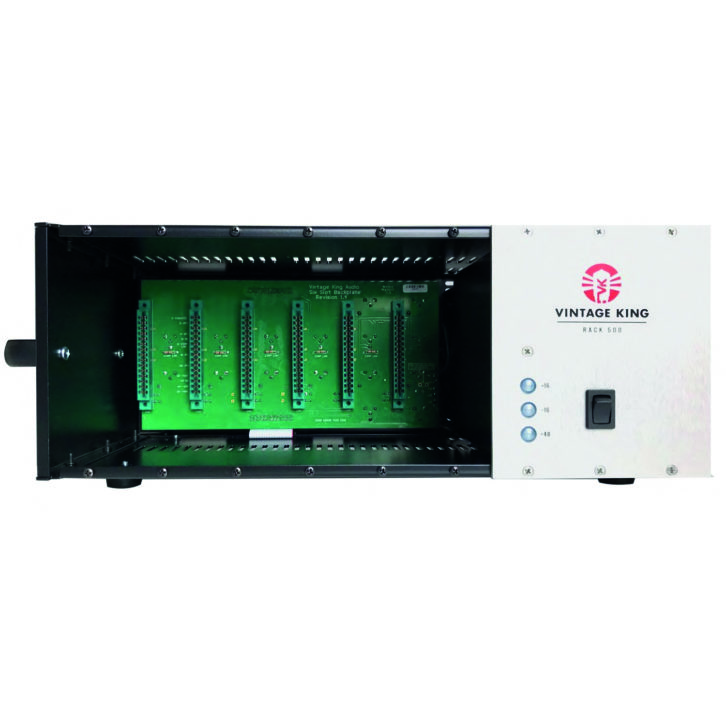
You may not require 32-plus channels of console, in which case we can economize on the board and redirect those funds toward more outboard and some extra microphones.
The Audient 4816 still gives you 16 mic pres and 48 channels on mixdown.
We’ll supplement the outboard with a six-slot Vintage King 500 Series rack containing a Rupert Neve Designs 535 Diode Bridge Compressor, Cranesong Falcon, API 312 mic pre, Weiss A1 pre amp with de-esser and the AMS RMX16 500 reverb.
We still have plenty in the bank to widen our microphone list. On large-diaphragm duties we’ll have the stunning Advanced Audio CM251, a pair of Peluso’s P67s and another sE Electronics/Rupert Neve collaboration, the magnificent RNT. You can’t go wrong with a Shure SM7b for live vocals and heavy guitars, the classic Sennheiser MD421 for tom, guitar and bass work, Electro-Voice’s RE20 always comes in handy on kick, floor tom, sax and even vocals and a matched pair of Coles 4038 so we have overheads and horns covered.
There’s a couple of useful sE tools I’d like to add, as well: The V Kick, the Harp Blaster (which sounds great on guitars and vocals too!) and the DM1 Dynamite to vamp up levels on the odd ribbon or the SM7b. To complete our mic cupboard, a strange looking mic, value for money, Aston’s Element.
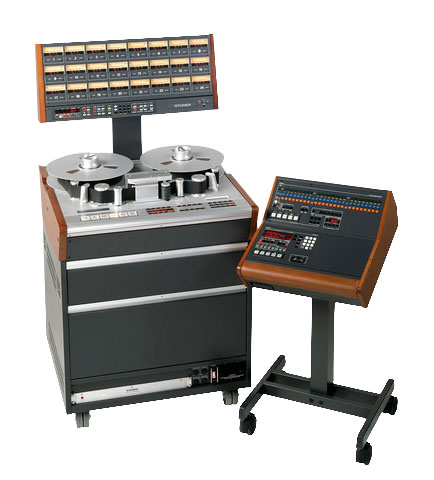
Reducing our console cost has expanded our outboard gear and has put some more mics on stands and you’ll be pleased to see that we still have some cash left over. So let’s go full-blown analog here and spend our last few dollars on an actual, not the plug-in, 2-inch tape machine! Trawling the second-hand sites I found a Studer A827 24-track. And if we’re going full analog there’s going to be some down time when you’re bouncing tracks, checking the lineup of the machine, and cleaning it, so to keep our artists occupied and give them a break, I’m spending a bit of money on an old-school Supercade arcade game. Hey, we all need to blow off some steam and clear the mind.
The 65 bucks we’re left with can go toward some isopropyl alcohol and Q-tips to clean
the Studer.
Option 2: A True Power Center
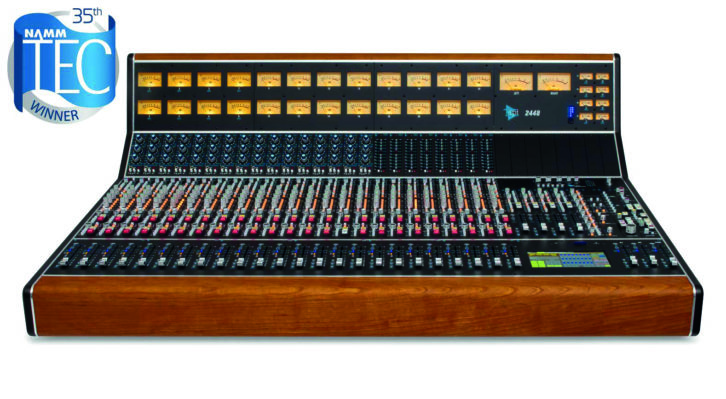
If you’re in a situation where you have a good supply of microphones and outboard gear and you’re looking at moving more out of the box or upgrading your console, I’d highly recommend looking at API’s 2448. Working on an API always makes me reach for other pre’s and outboard a lot less. Now this beast comes with a price tag, but you get what you pay for. And it does leave us enough to put in the PSI M25As.
Immerse Yourself
With Immersive Audio on the rise in music-only projects, it’s worth looking into adding this function to your setup. For each configuration, be it the SSL, Audient or the API, I have added a year’s subscription to the Auro Technologies’ Auro-3D Creative Tools Suite for Music.
There are multiple reasons why I have chosen Auro-3D for our immersive setup. Personally, I feel that Auro lends itself more to music. The speaker layout, which is basically 5.1 surround with the addition of front and rear height channels, is also compatible with Dolby Atmos, if required. The speaker setup is also easier to install, as you don’t need to worry about the overheads putting load on your ceiling. And the overhead (Voice of God) channels are not that useful in immersive sound for music. You get more creative possibilities from Auro’s height channels. Music in 3D also doesn’t need the object-based technology. So even though Auro-3D offers objects in its technology, it focuses more on the creative side of the process, making it fit more with the recording-to-master workflow.
In addition to the full immersive tool set, this technology also allows you to upmix mono, stereo and other surround configurations to a full 3D immersive release without altering the “sound” of the music, making it a more predictable way of working and enabling you to create multichannel masters “the way the creator intended.”
One more benefit I should point out is that this format allows for 96kHz physical release, and to me it sounds like uncompressed PCM without the coding artifacts of other codecs.
Of course, more channels, more speakers! For our immersive Auro-3D I’m going to suggest sticking with PSI Audio; that way, we’re sonically compatible with our existing stereo rig.
I’m supplementing the PSI M25As with an additional one for the center and six A17Ms for the surrounds and height. The A225M sub will handle the low-end information.
